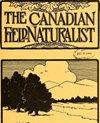Impact of grazing and conservation opportunities for nesting grassland birds in a community pasture
Q4 Agricultural and Biological Sciences
引用次数: 0
Abstract
Multiple bird species-at-risk nest on the ground in hayfields and pastures, making nests susceptible to inadvertent destruction from agricultural activity (e.g., trampling by livestock). To better understand the impact of Domestic Cattle (Bos taurus) grazing, we assessed the distribution and breeding status of nesting grassland birds in 2019 and 2020 at the Grey Dufferin Community Pasture, a ~234 ha pasture in southern Ontario, Canada. We estimated there were 86 male Bobolink (Dolichonyx oryzivorus) in the community pasture in 2019 and 100 in 2020 before grazing began; observed abundance decreased by 73% in fields after grazing in 2020. Eastern Meadowlark (Sturnella magna) maintained territories after grazing and fledged young in 67% (n = 21) of territories. Savannah Sparrow (Passerculus sandwichensis) was common across the community pasture before and after grazing occurred. We detected evidence of nesting more frequently in Bobolink and Savannah Sparrow territories in ungrazed than in grazed fields. Our results support previous research indicating nesting Bobolink often disperse from moderately to heavily grazed fields, whereas Eastern Meadowlark and Savannah Sparrow largely remain and renest. Despite the inadvertent negative impacts of cattle stepping or laying on nests and consuming vegetative cover, the community pasture provides areas for successful nesting, with Eastern Meadowlark faring better than Bobolink. Flexibility in the timing and duration of grazing in rotational grazing systems may enable strategic management in target fields (e.g., maintaining enough vegetation for nesting Bobolink). Information about the distribution and abundance of birds can be used to target particular fields for conservation.放牧和保护机会对社区牧场筑巢草地鸟类的影响
多种濒危鸟类在干草地和牧场的地面上筑巢,使它们的巢容易因农业活动(如牲畜踩踏)而遭到无意的破坏。为了更好地了解家牛放牧的影响,我们在加拿大安大略省南部约234公顷的Grey Dufferin社区牧场评估了2019年和2020年筑巢草地鸟类的分布和繁殖状况。我们估计,在放牧开始之前,2019年社区牧场有86只雄性食米羚,2020年有100只;2020年放牧后,观测到的丰度下降了73%。东部草地鹨(Sturnella magna)放牧后仍能维持领地,67% (n = 21)的领地仍能羽化。大草原雀(Passerculus sandwhensis)在放牧前后普遍存在。我们发现在未放牧的食波林鸟和大草原麻雀领地筑巢的证据比放牧地更频繁。我们的研究结果支持了先前的研究,即筑巢的食米鸟通常会从中度到重度放牧的地区分散,而东部草地鹨和萨凡纳麻雀则主要留下来休息。尽管牛群踩踏或筑巢和消耗植被覆盖无意中产生了负面影响,但社区牧场为成功筑巢提供了区域,东部草地鹨的筑巢情况优于食波林莺。在轮牧系统中,放牧时间和持续时间的灵活性可以使目标区域的战略管理成为可能(例如,保持足够的植被以供食米鸟筑巢)。有关鸟类分布和数量的信息可以用来确定保护的特定领域。
本文章由计算机程序翻译,如有差异,请以英文原文为准。
求助全文
约1分钟内获得全文
求助全文
来源期刊

The Canadian Field-Naturalist
Agricultural and Biological Sciences-Ecology, Evolution, Behavior and Systematics
CiteScore
0.60
自引率
0.00%
发文量
54
期刊介绍:
The Canadian Field-Naturalist (ISSN: 0008-3550) publishes scientific papers by amateur and professional naturalists and field biologists, reporting observations and results of investigations in any field of natural history, provided they are original, significant, and relevant to Canada.
 求助内容:
求助内容: 应助结果提醒方式:
应助结果提醒方式:


